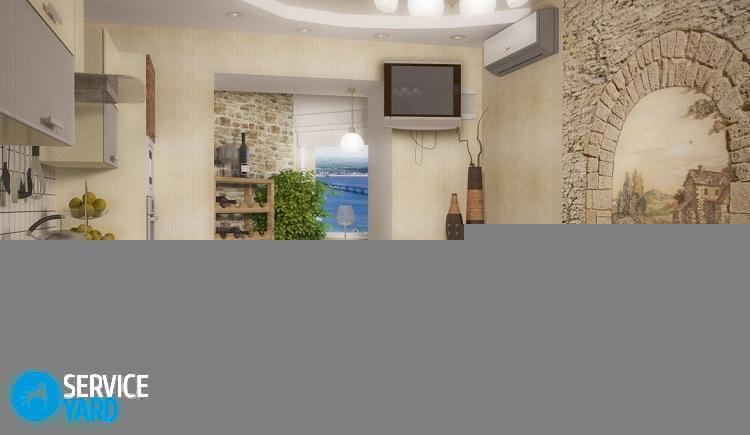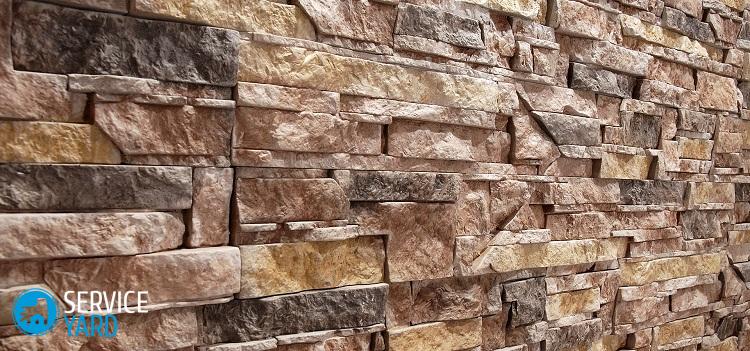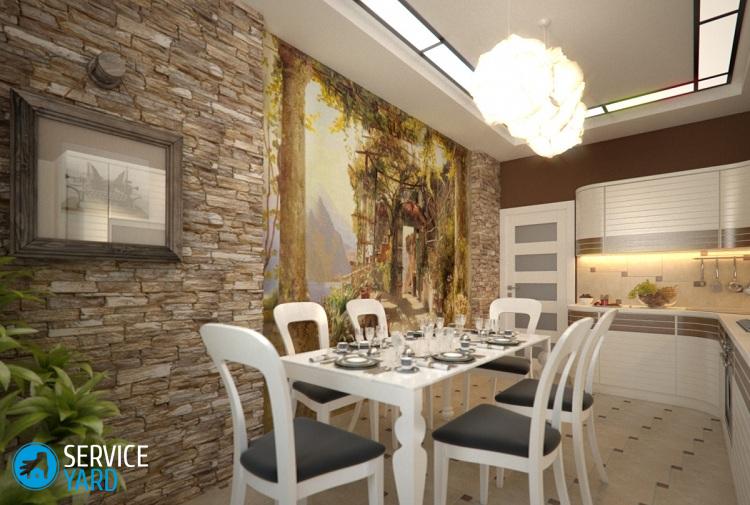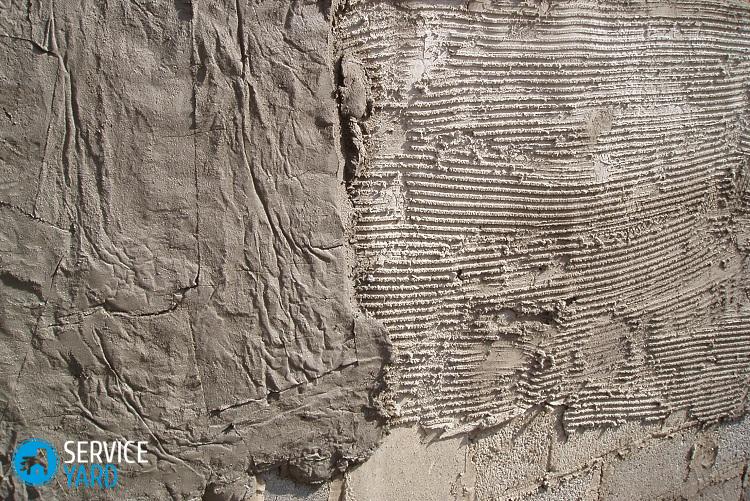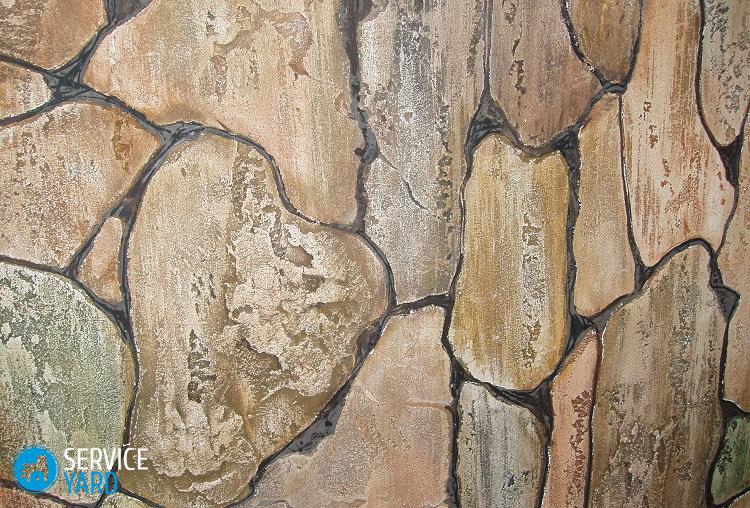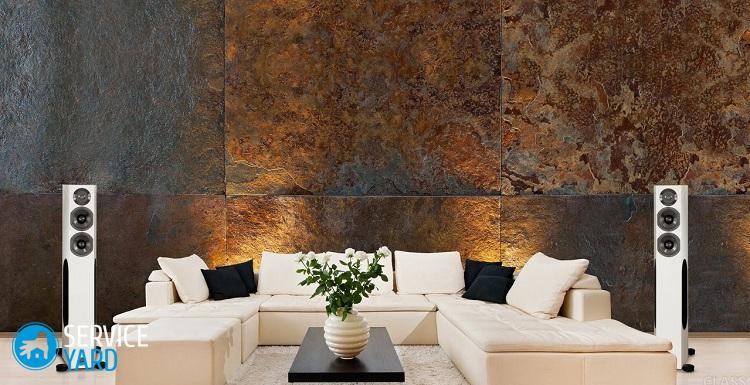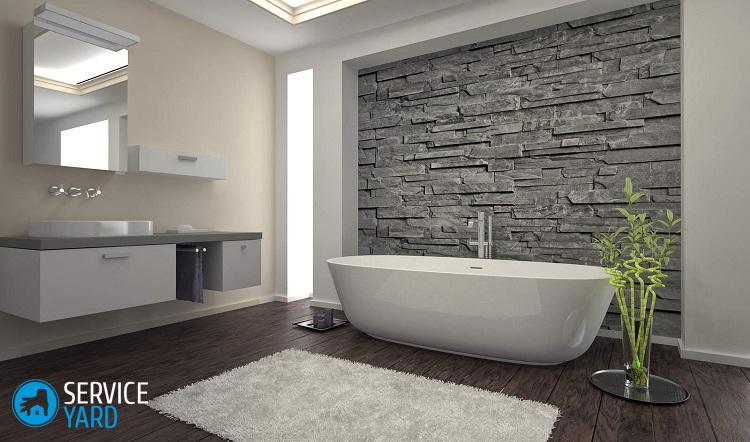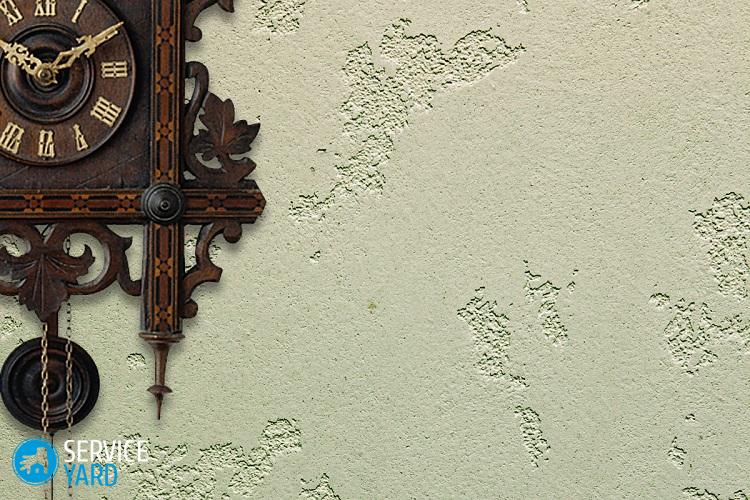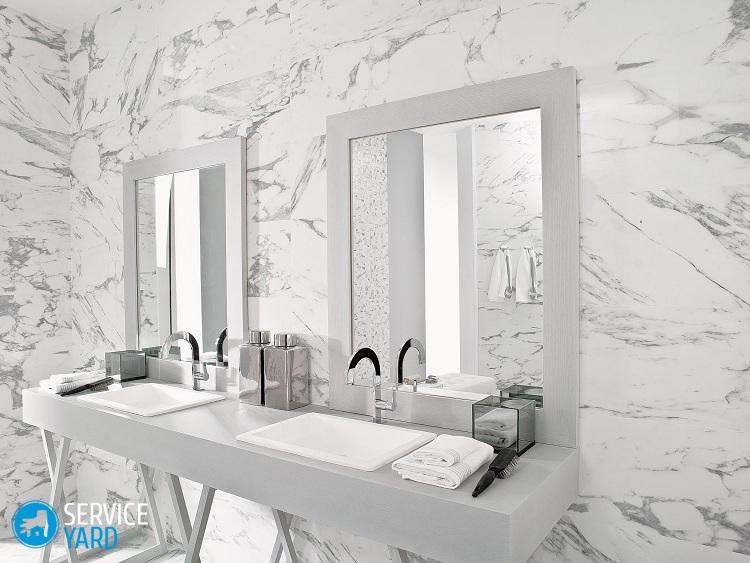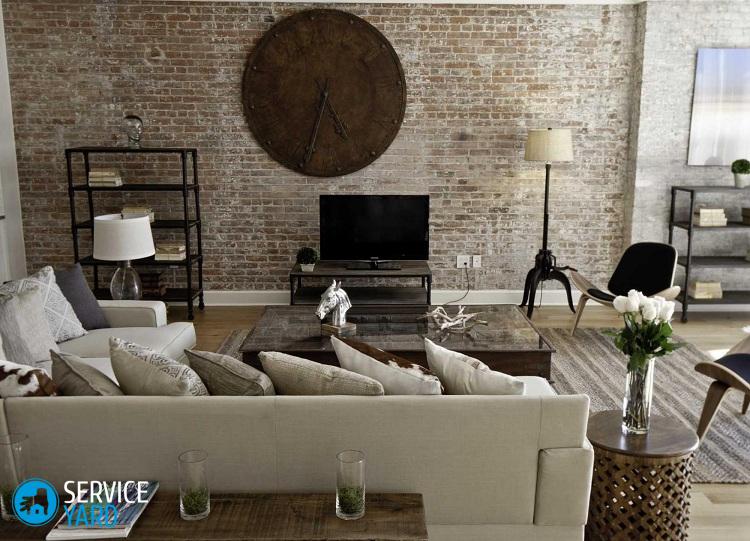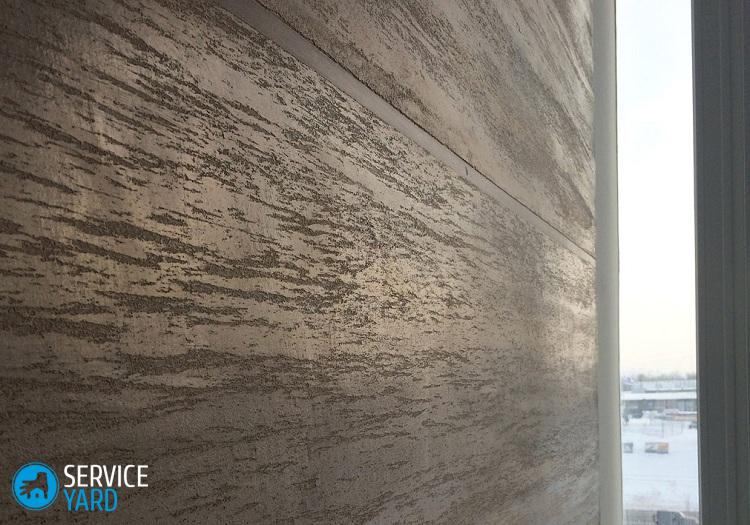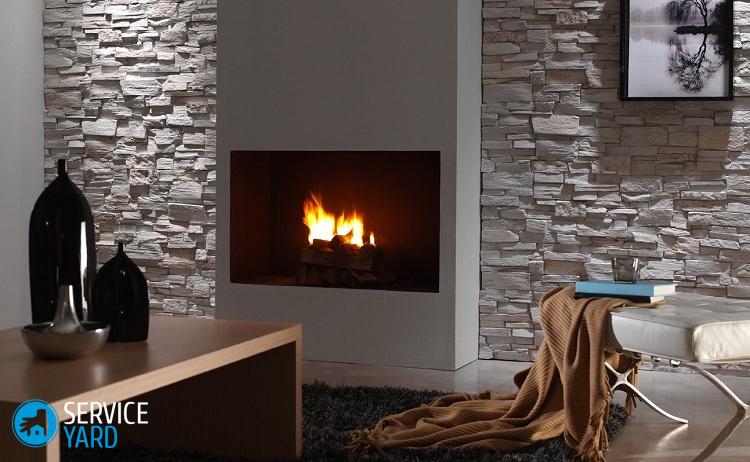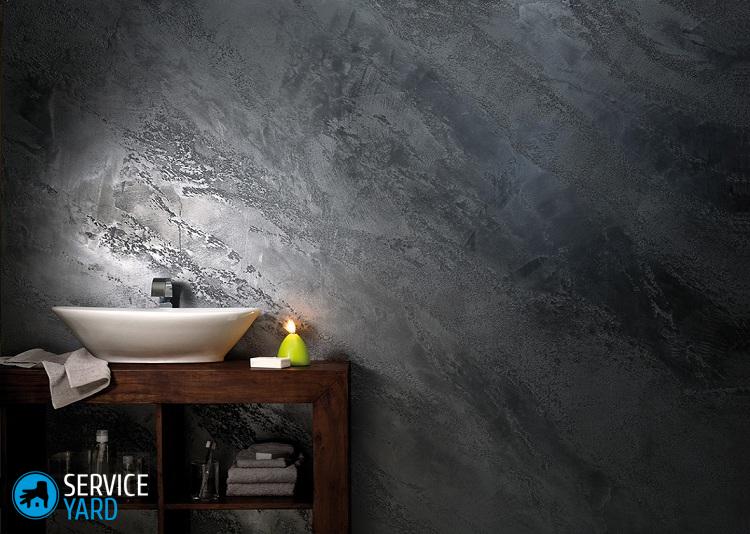Stone decorative plaster
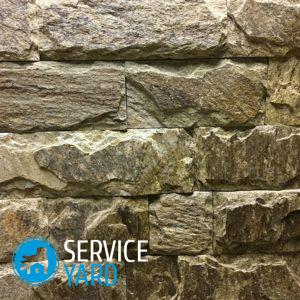
Stone decorative plaster is suitable for exterior and interior decoration of a house. It is indisputable that the use of natural stone is one of the oldest ways to decorate the facade of a home. Natural material has high strength, a variety of colors and shapes. But building a room from natural raw materials is quite difficult and costly on the financial side. Thanks to modern technologies for the production of building materials, a similar effect can be achieved using special putty under natural stone. Wall decoration with this material will give the building a special majesty and power. Imitation of natural stone can be used not only for decoration of the facade of the house. With the right combination, it fits perfectly into the interior of the interior, for example, living rooms, hallways or wine cellars. Next, we will describe in detail how the imitation of artificial stone made from plaster with our own hands occurs.
to contents ↑Putty under a stone: composition, types
The composition of the mixture includes:
- Natural stone processed to a powder state.
- So that the stucco under the stone does not lose its shape and withstands weather conditions, cement is added to the composition.
- Quartz sand.
- Lime.
- Various plasticizers.
- Marble chips.
- Mica.
to contents ↑Important! The wall plastering under the stone is produced coarse and fine-grained to create a textured surface, and powder-like to create an even, smooth wall coating.
Varieties of decorative stone coatings
The method by which the imitation of stone from plaster is carried out is based on the creation of a special texture, color and relief on the surface. You can perform this type of work using concrete, gypsum or lime plasters. In this case, it is appropriate to use both expensive branded putties and regular budget compositions. The technique for creating stucco in the form of a stone differs in the depth of the drawing.
Flat:
- Smooth wall plaster can be used to simulate marble, graphite, or polished stone slabs.
- To create a similar effect, the surface should be as flat as possible, without any flaws.
- In the process of decorating the walls, they are treated with a wax composition, in the end they are polished. Thus, the walls have a smooth glossy or semi-gloss surface.
- The color of the picture is obtained by mixing differently colored stucco mixtures or painting the wall.
Textured:
- The decoration resembles a building made of large solid stones, such as sandstone, limestone.
- The putty of the walls with textured finish has a rough surface similar to that of natural stone.
- Do-it-yourself decorative stone made from gypsum plaster in this technique will not be difficult. The work does not take much time, and the effect is easily achievable.
- Imitation of stone plasters can be made with a fine pattern, as well as a convex volumetric pattern.
Flat-Relief:
- Wall finishing with imitation of stone texture can be made in the form of masonry.
- In this case, the seams between the simulated stones do not deepen too much, they are slightly treated with a furrow.
- Plasterelief plaster is used when they want to depict natural stone, stone blocks or bricks.
Important! In the process of finishing, deep depressions do not form on the surface, the wall remains fairly even and flat.
- Without any experience in working with putty, creating this type of coating is a little more difficult, all the more you will have to make every effort to draw believable masonry.
Convex:
- Finishing of the building occurs by image on the surface of the volumetric masonry.
Important! In the construction industry, this type of work is called 3-D plaster.
- To portray natural stone in this way for a novice builder can be a challenge. Finishing requires certain skills.
- The solution is applied to the wall in stages in significant volumes, and staining is carried out in several stages.
to contents ↑Important! Do-it-yourself stuccoing most easily happens if you use special prints - molds. With their help, a plausible pattern similar to the original stone is easily created. However, their acquisition leads to additional waste.
Cost of work:
- Attracting a private team of craftsmen for the work will entail large payments for services. If you turn to a construction company, expect a 10-20% increase in the cost of construction work, and this does not include the cost of necessary materials.
- The cost of the work depends on the total area on which decorative plaster will be applied.
- Materials and other related components are an additional expense item.
- The main advantage of the work of the masters is the speed of the work. Without a certain knack, finishing takes longer, resulting in significantly lower quality sanding.
- But if you are not afraid of experimentation and creative work, the budget option for finishing your home can be done with inexpensive mixtures bought at a hardware store or made with your own hands.
It is believed that the imitation of stone on the wall with your own hands without the experience of carrying out such work is a very difficult and almost impossible task. For this reason, developers who have the desire, time and effort to finish the walls often give up. But stucco under a stone is not so terrible as they say about it. In the process of work there is no need to perfectly align the walls, while using expensive mixtures in large quantities.
to contents ↑Important! The only exception is the marble wall finish. The wax, polished to a shine, shows the slightest flaws, bumps and grains of sand on the surface.
Marble Wall Decoration:
- Walls covered with plaster are carefully leveled to a perfectly flat surface. For work it is better to use special gypsum compounds with a deep white glow.
- After the walls have completely dried out, the perimeter treated with the mixture is smoothed out using a sanding mesh and covered with a layer of acrylic primer to fill the pores of the material.
Important! The priming process allows the material to firmly adhere to the surface.
- To simulate marble, 2-4 containers with plaster of different colors are bred. For this, ready-made mixtures of different shades or a white solution in which pigments of different colors are added are suitable.
- The surface to be treated is pre-coated with a general tone.
Important! The intensity of the plaster depends on the intensity of the primary color.
- To create a marble pattern, putty of different shades is laid out in small portions on the edge of the main spatula.
- Then applied to the wall in such a way as to achieve uneven mixing of colors.
Important! Alternatively, putty can be applied to the wall surface in a phased manner. To do this, first use one shade, and then another.
- Level the layers on the wall with a spatula or trowel, while the figure should be as flat as possible.
Important! If the layer is too thin, the process is repeated again.
- After the surface has dried, it is treated with wax, thereby imparting water-repellent properties and give the characteristic marble shine.
- At the end of the finish, the coating is sanded with a special grinder with a soft nozzle.
to contents ↑Important! In order to hone your skills and plaster as much as possible resembles natural stone, you need to train. To do this, make a test layer on a drywall sheet, and only after successful attempts, go to the main surface.
Stone slab imitation
Ordinary and inexpensive building stone does not have a perfectly smooth and smooth surface. In most cases, it is rough to the touch, has visible traces of the tool, with randomly placed recesses and tubercles. This special texture of the material in no way complicates the finishing process, but rather - imitation of stone on the wall is simplified.
Procedure:
- Before applying the plaster, the wall is pre-leveled, treated with a deep penetration primer, left to dry completely.
Important! The application of a primer is an important stage in the process of finishing work, the untreated surface has poor adhesion with putty.
- The first layer of putty is applied with a spatula or trowel, evenly spreading over the entire surface.
- The roughness is achieved by the sticking method, for this purpose, with a gentle blow of the brush or bristle brush, the surface is structured by soft strokes of the brush.
- The next layer is applied after the previous one has completely dried. Fill the surface with small shapeless areas.
- A torn effect is achieved when the first layer has already set, and the second is still wet.
- For painting the plane using breathable paint, which is applied with a roller, and in hard-to-reach places - with a brush.
- The next layer for painting walls should be of a different color, applied by a short-haired roller only to the convex parts of simulated brickwork.
Important! A different shade of putty should emphasize the volume, so it is recommended to apply the first layer in a darker color, and the second - light, or in reverse order.
- At the end, the entire perimeter is covered with wax. To give the walls a beautiful sheen, they must be sanded.
Important! As an alternative, the walls can be treated with acrylic varnish.
The result of the finishing work will depend on the basis and area of the treated surface, as well as the directionality of the spots of the final layer. To create a unique decoration of the wall of the house, a metallic dye (aluminum powder) is added to the pigment of the second dye.
to contents ↑Indoor masonry simulation
Imitation of masonry with your own hands is a little more complicated if you perform it without any specific experience. This type of finish can be done in several versions:
- Flat top. When creating a flat relief of masonry for indoor use, the process is not difficult, especially if the plaster repeats the wall of stone blocks.
- Convex. To depict the convex parts of the wall is much more difficult. To apply the masonry pattern in blocks, the rule is used. For surface finishing from roughly processed stones - placement is arbitrary.
Phase of work:
- Plaster. The surface of the wall is covered with a layer of plaster with a thickness of at least 7-10 mm, then cracks and recesses are depicted with a brush. In this way, a plausible drawing is achieved.
Important! The two-layer plasters, which we wrote about above, do not require additional preparation, they initially have a realistic texture of the stone.
- Sketch After applying a layer of plaster, without waiting until it dries, a contour drawing is applied with a sharp object, such as a knitting needle or an awl.
Important! Regardless of which of the masonry options you decide to depict, be sure to use the construction level so that the masonry rows do not collapse. Thus, the pattern will be more believable.
- Study of the details. To give the masonry a realistic look, you need to work out clear lines. To do this, the contours of the line deepen the entire depth of the plaster, and the edges expand. To do this, you will need a spatula corner or a triangular piece of plastic, tin.
- Alignment. You should wait until the top layer of plaster is thoroughly dry. Using sandpaper, you need to clean visible lumps and ugly bulges.
- Grinding. Small notches are eliminated with fine sandpaper, and they also grind the entire surface of the wall.
- Coloring. Masonry is painted in several stages, first of all, the main tone of the paint is applied, the recesses are painted with additional dark colors, and the bulges are painted with a light shade.
to contents ↑Important! To give the surface a plausible look, some elements of the brickwork are shaded with a different color, half a tone lighter or darker than the others.
Imitation of a stone wall with prints
The plastering of the walls, the image of the masonry in which is squeezed with prints, occurs in the same sequence as the decoration by hand. The only difference is that the decor takes place according to the prepared template.
Important! When working with a mold, imitation of masonry is the simplest and does not require additional experience and skills.
Work sequence:
- Before making a print, the mold is pre-wetted in water. This prevents sticking of the plaster to the mold.
- With a gentle press, the mold is pressed into the solution, as far as the imprint depth allows.
- Visible distortion of the picture or minor defects are eliminated with a spatula or knife.
Important! If the plaster has stuck to the mold and comes off, it is necessary to again apply a layer of the mixture, moisten the mold and squeeze the pattern.
Thanks to the use of the mold, the speed of work increases significantly, but the high cost of a special tool increases the cost of finishing.
to contents ↑Possible errors during masonry simulation
Putting a wall under a stone with your own hands differs from the work of professional builders only if gross errors are made when performing the work:
- Roughly applied drawing. Imitation of masonry should be done smoothly. Make sure that the direction of the longitudinal ribs is strictly horizontal.
- The formation of waves on the surface. The relief on which the wavy lines appeared is a sign of the work of an unskilled craftsman, since a natural stone with this form does not exist.
- The exact shape of the stones. Stone slabs applied to the wall do not have to be perfectly even, as natural materials do not have the same shape. Do not worry if in one of the sections of the cavity between the stones is slightly larger than the others.
- Roughness. Irregularities or spools formed in the process of creating a pattern should be cleaned with sandpaper.
Stock footage
As you can see, imitation stone made of stucco It is performed no more complicated than other painting and plastering works and can be done without special experience. The tips and tricks from our article will help make the facade of your house as magnificent and impregnable as a fortress.
- How to choose a vacuum cleaner taking into account the characteristics of the house and coatings?
- What to look for when choosing a water delivery
- How to quickly create comfort at home - tips for housewives
- How to choose the perfect TV - useful tips
- What to look for when choosing blinds
- What should be running shoes?
- What useful things can you buy in a hardware store
- Iphone 11 pro max review
- Than iPhone is better than Android smartphones



